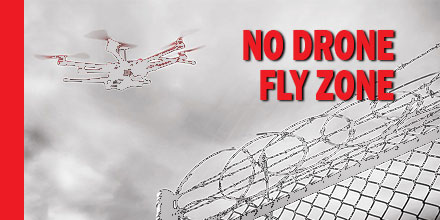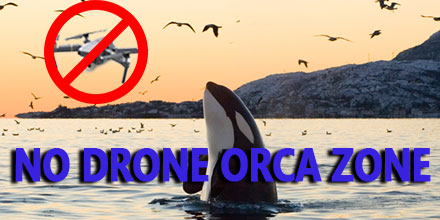
Call it the ultimate No Drone Fly Zone.
On Aug. 4 the Department of Defense (DoD) released classified guidelines for military personnel. The guidelines focused on available actions in the event of unauthorized drone intrusion over or around a military installation.
The Federal Aviation Administration (FAA), along with other inter-agency partners, helped develop the guidelines. It follows classified guidance that was previously provided to the services and installations in early July.
“Protecting our force remains a top priority and that’s why DoD issued the specific, but classified policy that details how DoD personnel may counter the unmanned aircraft threat,” said United States, Navy Capt. Jeff Davis.
A growing concern?
According to a Pentagon spokesman, the guidance is to help address growing concerns around safety and security of military installations, aviation and people.
And, certainly, drone use continues to explode across both recreational and commercial sectors.
The FAA predicts the number of hobbyists will increase to 355 million by 2021. Commercial drone users are expected to increase to 442,000 during that same time period.
Of course, all drone operators must adhere to FAA regulations and guidelines. Any flight operated beyond these regulations is considered unauthorized activity.
In April, the Pentagon and FCC announced a new rule which prohibited any drone flights within 400 feet of 133 domestic installations. Pilots caught violating the restriction were subject to arrest. However, that announcement did not mention any direct action the military could take to destroy or intercept the drones.
Tracking, disabling, destroying
If an unauthorized drone flight intrudes into military airspace, DoD personnel now have guidelines in place to respond to the threat.
Authorized actions include: tracking, disabling and destroying drones. Of course, the authorized action depends on the circumstance and the type of installation where the drone activity is detected.
“We support civilian law enforcement investigations in the prosecution of unauthorized UAS operations over military installations,” Davis said. “And though we do not discuss specific force-protection measures, we of course retain the right of self-defense. When it comes to UAS or drones operating over military installations, this new guidance does afford us the ability to take action to stop those threats.”
Drone operators can find additional flight regulation information at the Know Before You Fly website.
Before these guidelines, the military could take action to intercept a wayward drone. Those options included use of traditional ammunition to destroy the craft all the way to commandeering them via radio waves. In addition, intercepted crafts were subject to seizure “as part of investigations,” said Davis.
So, wayward flyers beware, intruding over or around any of these 133 installations could result in the loss of your craft.
 Call it the ultimate No Drone Fly Zone.
On Aug. 4 the Department of Defense (DoD) released classified guidelines for military personnel. The guidelines focused on available actions in the event of unauthorized drone intrusion over or around a military installation.
The Federal Aviation Administration (FAA), along with other inter-agency partners, helped develop the guidelines. It follows classified guidance that was previously provided to the services and installations in early July.
“Protecting our force remains a top priority and that’s why DoD issued the specific, but classified policy that details how DoD personnel may counter the unmanned aircraft threat,” said United States, Navy Capt. Jeff Davis.
Call it the ultimate No Drone Fly Zone.
On Aug. 4 the Department of Defense (DoD) released classified guidelines for military personnel. The guidelines focused on available actions in the event of unauthorized drone intrusion over or around a military installation.
The Federal Aviation Administration (FAA), along with other inter-agency partners, helped develop the guidelines. It follows classified guidance that was previously provided to the services and installations in early July.
“Protecting our force remains a top priority and that’s why DoD issued the specific, but classified policy that details how DoD personnel may counter the unmanned aircraft threat,” said United States, Navy Capt. Jeff Davis.

 Legislation introduced in the state of Washington aims to limit drone interference for some very special residents…an endangered population of Orcas.
These Orcas, also known as the southern resident killer whales, are the smallest of four resident communities within the area. It is the only killer whale population listed as endangered by the U.S. Fish & Wildlife Service. In addition, they are protected under the Endangered Species Act.
The proposed bill requires drone operators to maintain a 200-yard buffer, in all directions, from any southern resident killer whales. This buffer already applies to boats, vessels and other objects that might encroach on the animals.
However, the existing law was unclear as to whether or not the line other objects applied to drones and other sUAS.
Legislation introduced in the state of Washington aims to limit drone interference for some very special residents…an endangered population of Orcas.
These Orcas, also known as the southern resident killer whales, are the smallest of four resident communities within the area. It is the only killer whale population listed as endangered by the U.S. Fish & Wildlife Service. In addition, they are protected under the Endangered Species Act.
The proposed bill requires drone operators to maintain a 200-yard buffer, in all directions, from any southern resident killer whales. This buffer already applies to boats, vessels and other objects that might encroach on the animals.
However, the existing law was unclear as to whether or not the line other objects applied to drones and other sUAS.
